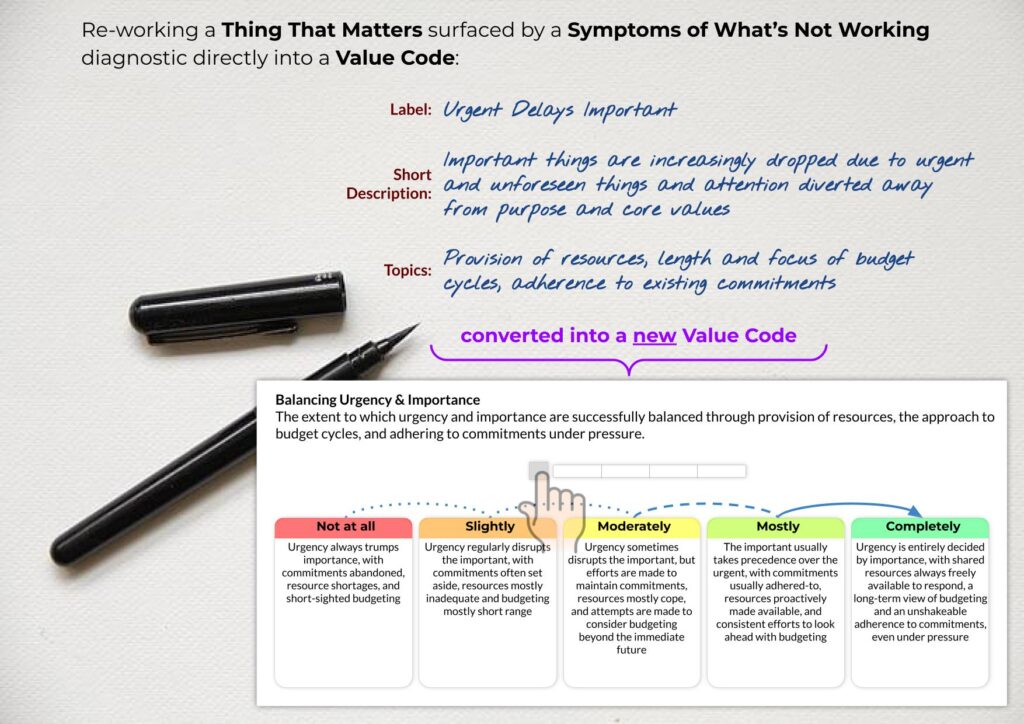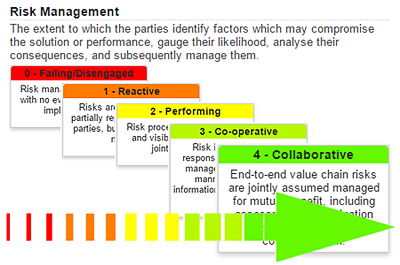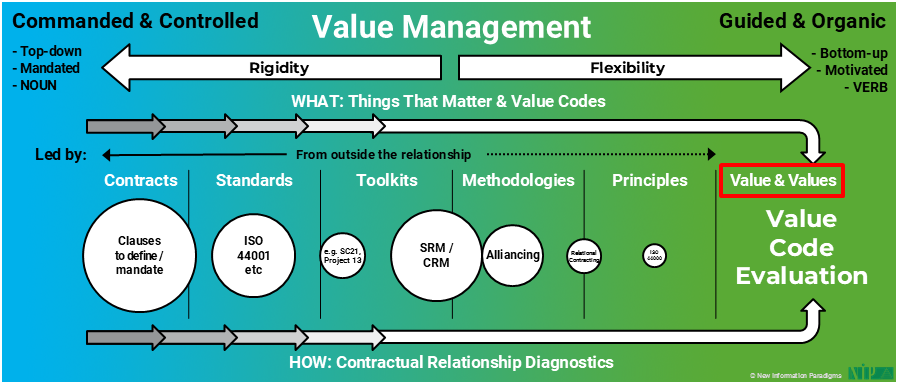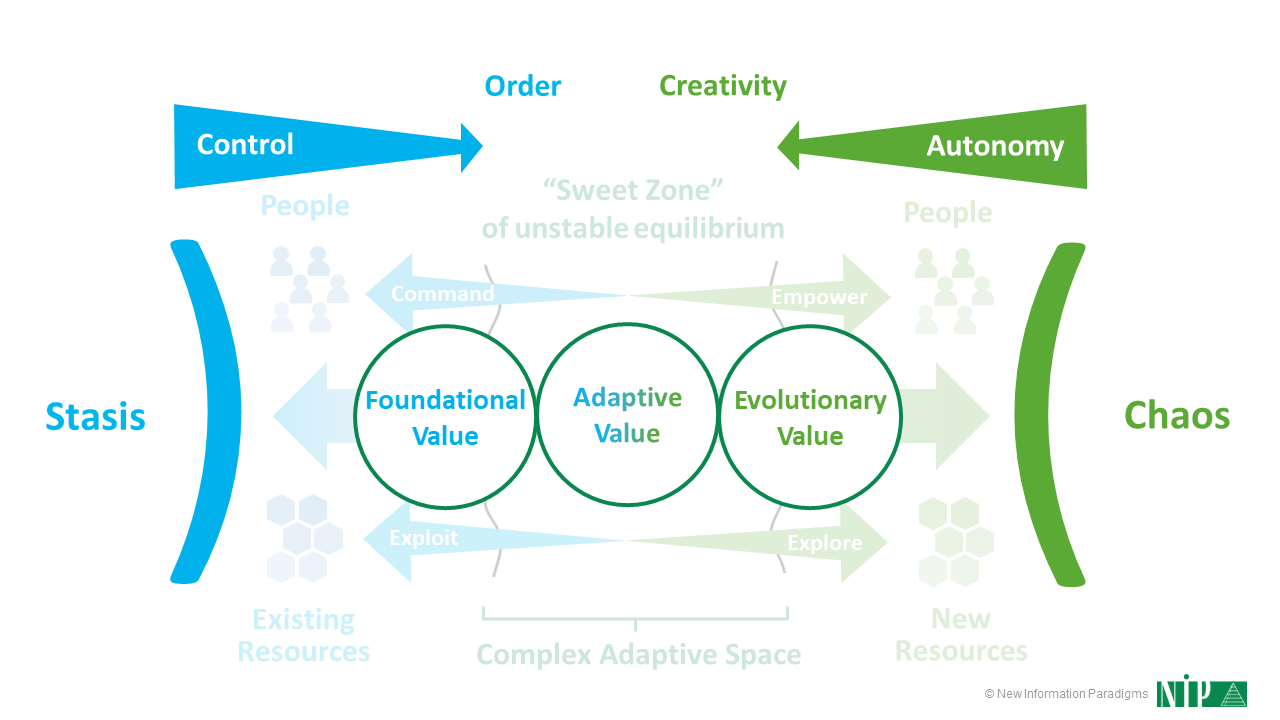Value Management: Value Coding
Value Coding is the process by which the (mostly subjective) Things That Matter are re-expressed in ways – Value Codes – that make them objectively measurable and manageable.
Derived from – or related to – one or more of the Things That Matter, a Value Code is a way of capturing and describing a specific aspect of activity in a format that:
- Moves from the emotional to the practical, from the abstract to the specific, and from description to action.
- Recognises and reflects how People most powerfully think creatively.
- Makes it possible to measure the current state of that activity, decide its desired state and start the process of getting there.
Depending on the situation, the process of developing the Value Codes might involve creating new Value Codes – either by converting the Things That Matter or by writing them from scratch – or it could involve selecting existing Value Codes from our libraries:

- We have well over 100 existing Value Codes, derived from (and mapped to) over 90 different tools and methodologies.
- Once selected, these existing Value Codes can be adapted as needed (e.g. changing terminology to better engage the target audience).
In some cases, maybe there is a mixture of new and existing Value Codes.
In all cases, we can help if needed, including mapping the Value Codes to the agreed Things That Matter, such that both “levels” can be reported on later with any Diagnostic that follows.
What Goes Into a Value Code
Every Value Code has a short unique Label and a Description that gives more information about what the Value Code covers: this usually features the topics within the scope of the Value Code, and makes sure that everyone understands what it is about.
Each Value Code then has five Evaluation Statements that describe what progressive states of achievement, aptitude or fulfilment with that Value Code look like in practice, usually involving the topics described in the Description.

How Value Codes Are Used
All of this Value Code content can be presented and used in several ways.
It could be set out as content to read and understand – descriptions of best practice and intent that show people what is in scope and what is expected of them. After all, Value Codes capture what is valued and what that value looks like.
More often, though, Value Codes are used in Diagnostics to evaluate the current state of activity, decide its desired state and start the process of getting there.
Comments can also be provided to explain evaluations made and some evaluations also involve options to upload supporting evidence and/or to propose actions that could be taken to improve the situation.
Whilst people may provide different evaluations, a combination of 1. the objective Evaluation Statement Descriptions and 2. any comments and other information provided, means that subsequent discussions centre around specifics and not perceptions:
- The Evaluation Statements either are or are not objectively fulfilled in practice.
- The progressive differences between them also indicate what needs to happen to move from one to the other.
Value Codes make it possible to measure the current state of activity, decide its desired state and start the process of getting there.
Articles related to Value Codes:
The Transformation Needed for CCM: Part 3
Value Management meets the challenges of demystifying subjective value, and making it measurable and manageable – a complete value framework that can only be delivered with online diagnostics….
Understanding Diagnostics – don’t confuse them with surveys…
People typically don’t understand what a Diagnostic is. They then get all kinds of things wrong – especially in the conclusions they draw from them – and miss out significantly (even entirely) on the true insights and power that Diagnostics possess….
What’s it like to take part in an ARC Diagnostic?
What’s it like to take part in an ARC Diagnostic? ARC Diagnostics are how we deliver Value Codes for respondents to evaluate the Things That Matter, all in a fully secure, inclusive and scalable way. But what is it like to take part in a diagnostic? The answer…
Value Management: How to Avoid Being Overwhelmed
If they don’t realize it already, they will soon: anyone engaged in relationships is becoming overwhelmed by the difficulties and Complexity of decisions and trade-offs. Experience-based intuition currently bridges the gap, but it can’t scale and is doomed to fail. Here, we see the ideal…
Value Management: How and Why It Works
Part of the beauty of Value Management is that it just works. But how does it work? And why does it work? Because it is built on the most fundamental foundations – the nature of reality, the nature of value, and the ways…
Why “Things That Matter” really do matter: Part 4: The Alternative
There is a way out of the mess we’re in with the Things That Matter. It’s a comprehensive but simple three step process that makes the subjective objective, and the intangible tangible – all through engagement, motivation and change….
Value Management: SMARTER than SMART
Most of us are probably familiar with the concept of SMART goals. Value Management not only encapsulates SMART, but takes it further in three ways: meeting the challenge of Measurability, doubling-up the SMART and making goals SMARTER. Let’s see how….
Mastering Complexity: Part 3
In this final part of our Complexity series, we establish what a Complexity-appropriate conceptual framework looks like, the necessary operational transformations it leads to, and how Value Management supports all of it….









